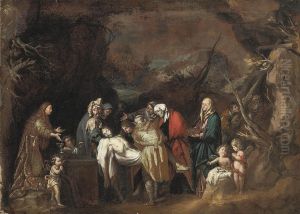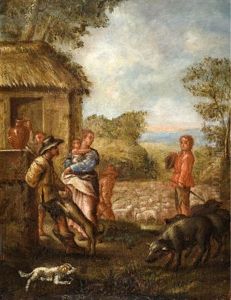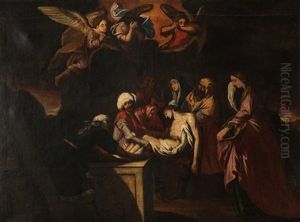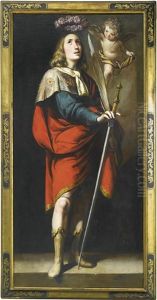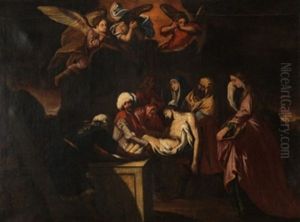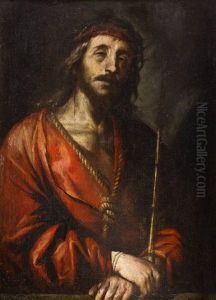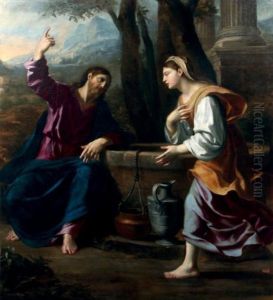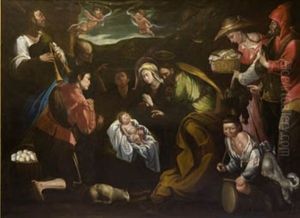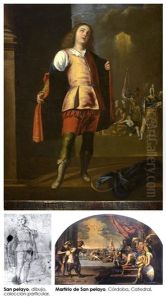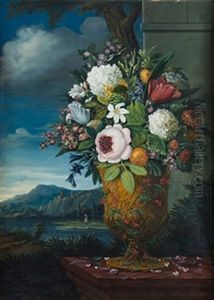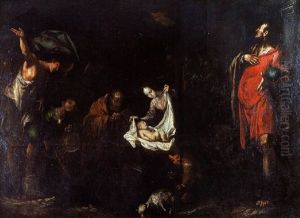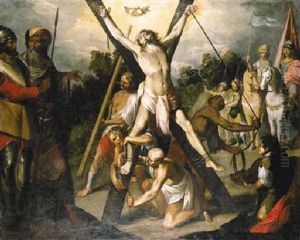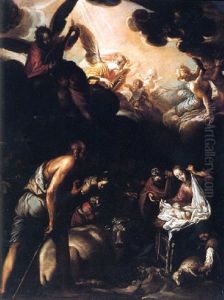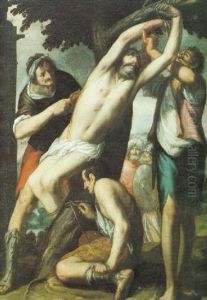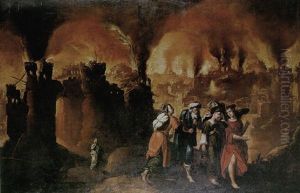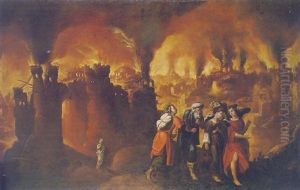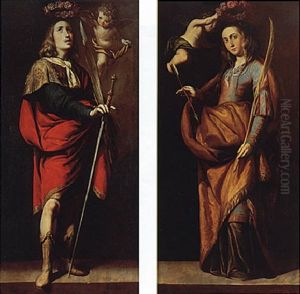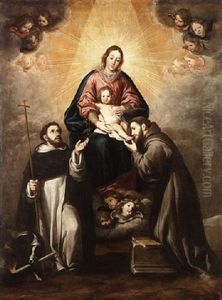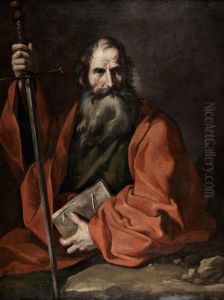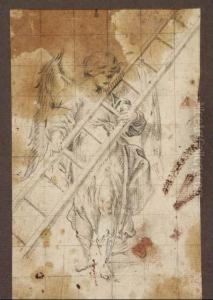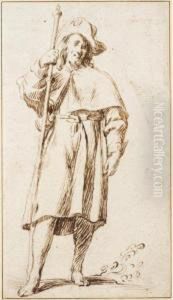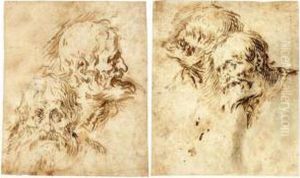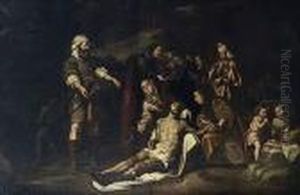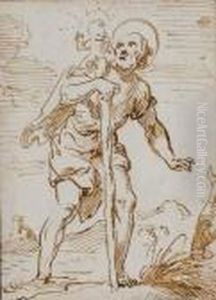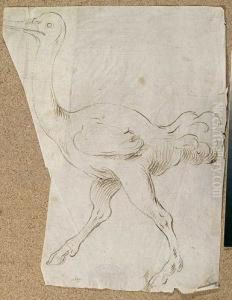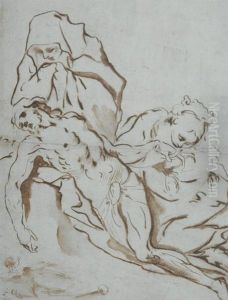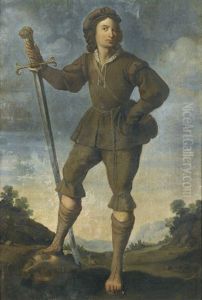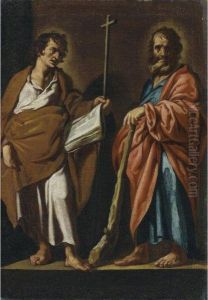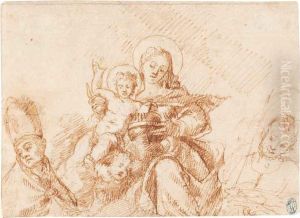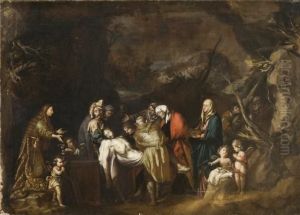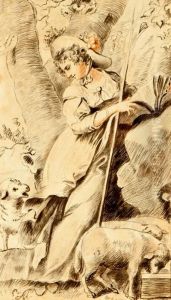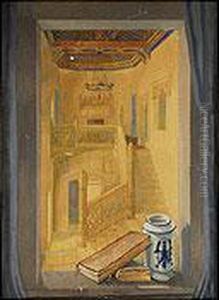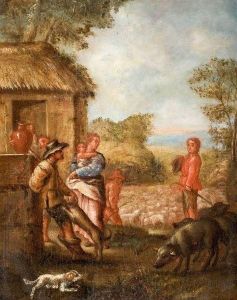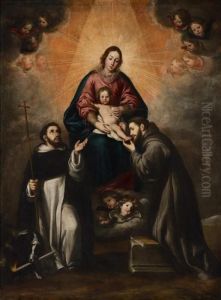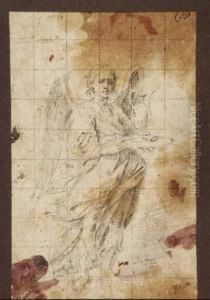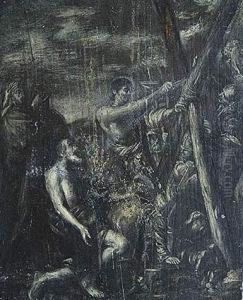Antonio Del Castillo Y Saavedra Paintings
Antonio del Castillo y Saavedra was a prominent Spanish painter and teacher, born in 1616 in Cordoba, Spain. His work and influence were central to the development of the Baroque style in the Andalusian region of Spain during the 17th century. Castillo y Saavedra's art is characterized by its religious themes, reflecting the counter-reformation ethos of his time, alongside a keen attention to detail and a profound sense of realism.
Educated in Cordoba and later in Madrid, Castillo y Saavedra was well-versed in the styles of his predecessors and contemporaries, which he skillfully blended into his own distinctive approach. His talent earned him several prestigious commissions, notably for churches and religious institutions across Andalusia. Beyond his paintings, Castillo y Saavedra was also a skilled draftsman and illustrator, contributing to books and manuscripts.
One of Castillo y Saavedra's most significant contributions to the art world was his role as a teacher. His workshop in Cordoba was a nurturing ground for young artists, the most famous among them being Bartolomé Esteban Murillo, who would go on to become one of the most celebrated painters of the Spanish Golden Age. The mentorship between Castillo y Saavedra and Murillo, however, was short-lived due to differences in artistic vision, leading Murillo to leave Castillo's workshop early in his career.
Despite his profound influence on the art of his region and his mentorship of future generations of artists, Castillo y Saavedra's own work was somewhat overshadowed by his more famous pupil, Murillo, after his death in 1668. Nonetheless, recent scholarship has begun to reassess his contributions, highlighting his role in shaping the visual culture of 17th-century Spain and his mastery in portraying religious fervor and humanity with remarkable sensitivity.
Throughout his career, Castillo y Saavedra was celebrated for his altarpieces, which combined intricate architectural perspectives with deeply emotive figural representations, capturing the spiritual intensity of the Counter-Reformation period. His legacy, though less known outside of Spain, remains significant within the annals of Spanish art history, reflecting a bridge between the Renaissance and Baroque periods and illustrating the rich cultural and religious tapestry of his time.
